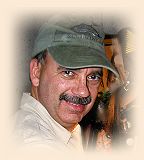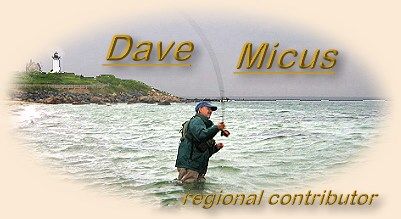|
I, like most anglers, learned to first
appreciate the delights of fishing at a
small pond. I grew up on the south side
of Chicago surrounded by steel mills, and
there weren't many places for a youngster
to fish. Carl, a family friend, would take
me and my brothers over the border into
northern Indiana to the two-buck pond, a
small body of water on a fallow farm so
named because the owner charged two bucks
per rod to fish. We mostly caught bullheads
in the pond, to the extent that they may well
have been the only fish in there, but they
were plentiful and I still look back with a
pang of guilt when I think how many I left
on the bank to die with no intention of
keeping them. Why do boys do that?
Carl was a great fisherman, one of those
anglers who would fish in a crowd and be
the only one who caught anything. He was
an ex-con who as a young man had served
five years for armed robbery, and he
developed in the penitentiary what the Inuit
call quinuituq or deep patience,
the ability to wait for long periods while
maintaining concentration. In prison this
talent probably kept him alive; on a pond,
or the lake or the ocean, it helped him to
catch fish when and where others couldn't.
A four by eight cell also taught him to
appreciate the outdoors, and I've never met
anyone who loved fishing more, though my dad
was a very close second.
That was long ago. Now I fish the Atlantic
Ocean, or at least that portion of it that
abuts the shore in and around Cape Anne,
Massachusetts, a rather large fishing hole,
to be sure. But the secret to fishing the
vast, featureless ocean is to dissect it,
and I still have my pond. It is a sand
beach off of a marsh bank that fishes well
two hours either side of low tide and is
only accessible by boat. At high tide it
is completely submerged. The name given
my fishing hole by cartographers is Third
Creek, because of the three saltwater
estuarine rivulets that converge there, but
the locals know it as triple creek.
I call it Key West.
Partly I do so to allow me to talk about this
spot without others knowing where it is, but
mostly because, at dawn on a bright summer
morning, it is as beautiful as any place in
the Keys; beautiful as any place in the world.
The sky goes from dark gray to flaming orange
to bright blue; the sand from purple to lavender
to vivid white. The water, protected by Plum
Island and as smooth as glass, melds from black
to dark green to aquamarine, and sparkles like
a diamond cutter's floor.
The only fishermen on the beach who I don't
bring are the snowy egrets, powerful portents
of the good fishing to come. Occasionally a
guide will linger off shore, watching me for
signs of bass just as he would watch birds or
bait. He pilots a powerful flats skiff
complete with poling platform, a beautiful,
but impractical boat, as poling isn't
necessary and site fishing for bass in the
true sense, that is, seeing the fish in the
water at a distance, is impossible. But it
probably adds to the experience for his sports,
and he is courteous, unlike other boaters,
inexplicably hell-bent on getting
God-knows-where as fast as they can and ruining
what I am here for-no, not fish, but tranquility.
But that usually isn't a problem; I always fish
Key West at dawn, when, the yahoos are at home,
I not only have the beach but the whole ocean
to myself.
My favorite way to fish the beach is to walk
with and parallel to the tide, casting a large
streamer and stripping it in as I walk with and
at the same speed as the current. The fly looks
like a baitfish fighting to swim cross current,
irresistible to the bass. When I hook a
line-sider, I land the fish, back up ten feet,
and fish that area again. On the outgoing tide
the rows of footprints in the sand, each one
below the previous, marks my progress; on the
incoming the water covers my tracks, destroying
the evidence.
But sometimes the bass are in 12 inches of water
right at the creek mouth, snatching baitfish as
they are washed out by the tide. Then I move
down the beach and cast parallel to the shore,
throwing short 30 foot casts instead of 80s,
aiming the fly right at the mouth of the creek
and letting it wash out to the waiting bass
like fishing for trout and always exhilarating.
When hooked in the shallows the bass rip line
through the surface when they run, and if you
hook a big one it is a bit like bonefishing.
Once fishing the shallow creek mouth before
work, I took six bass in less than thirty
minutes, the smallest of which was two-feet
long. And even when I heard the blaring horn
of the 6:30 Newburyport to Boston train at the
Federal street crossing, warning me that I had
fifteen minutes to make it home if I were going
to be on time for work, I stayed. Work would
have to wait.
Paddling to Key West by kayak is always a
chore, as, no matter what the tide, it will,
for some portion, be against me. And I know
that sounds like the old timer who complained
about walking miles to school, "uphill both
ways," but imagine a Y, with the tide coming
or going from the leg, Key West on one branch,
and the Eagle Hill River, where I launch, the
other. You can see that if I'm paddling with
the tide on the Eagle Hill River, I'll be going
against the tide when I paddle to Key West.
And vice versa.
I'm not complaining, though. A strenuous paddle,
or two bucks, is a small price to pay for a
fishing hole. ~ Dave
About Dave:
 Dave Micus lives in Ipswich, Massachusetts. He is an
avid striped bass fly fisherman, writer and instructor.
He writes a fly fishing column for the Port City Planet
newspaper of Newburyport, MA (home of Plum Island and Joppa Flats)
and teaches a fly fishing course at Boston University.
Dave Micus lives in Ipswich, Massachusetts. He is an
avid striped bass fly fisherman, writer and instructor.
He writes a fly fishing column for the Port City Planet
newspaper of Newburyport, MA (home of Plum Island and Joppa Flats)
and teaches a fly fishing course at Boston University.
|


 Dave Micus lives in Ipswich, Massachusetts. He is an
avid striped bass fly fisherman, writer and instructor.
He writes a fly fishing column for the Port City Planet
newspaper of Newburyport, MA (home of Plum Island and Joppa Flats)
and teaches a fly fishing course at Boston University.
Dave Micus lives in Ipswich, Massachusetts. He is an
avid striped bass fly fisherman, writer and instructor.
He writes a fly fishing column for the Port City Planet
newspaper of Newburyport, MA (home of Plum Island and Joppa Flats)
and teaches a fly fishing course at Boston University.